Fachartikel
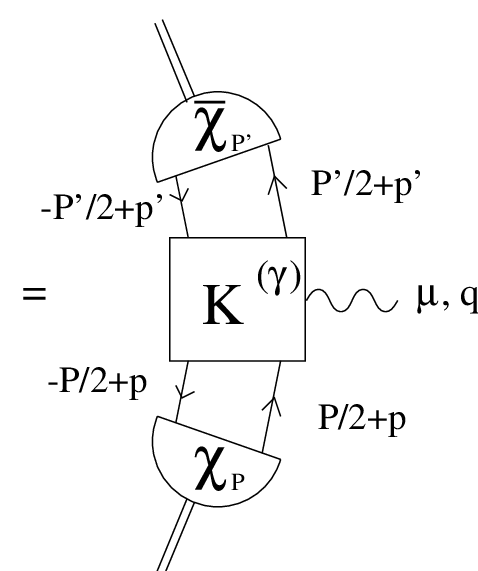
Electromagnetic meson form factors in a covariant Salpeter model
von Claus R. Münz, Jörg Resag, Bernard C. Metsch, Herbert R. PetryPhysical Review C52 (1995) 2110
We present a covariant formulation of the Salpeter equation for qq¯ states in order to calculate bound-state transitions between mesons. The corresponding Bethe-Salpeter amplitudes are reconstructed from equal-time amplitudes which were obtained in a previous paper by solving the Salpeter equation for a confining plus an instanton-induced interaction. This method is applied to calculate electromagnetic form factors and decay widths of low-lying pseudoscalar and vector mesons, including predictions for CEBAF experiments. We also describe the momentum transfer dependence for the processes ,η, →γ .
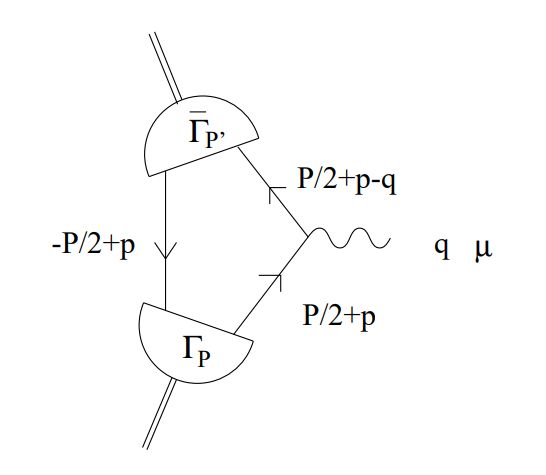
Heavy Quarkonia in the Instantaneous Bethe-Salpeter Model
von Jörg Resag, Claus R. MünzNuclear Physics A590 (1995) 735
The heavy quarkonia (Charmonium cc− and Bottomonium bb−) are investigated in the framework of the instantaneous BS-equation (Salpeter equation). We parametrize confinement alternatively by a linearly rising scalar or a vector interaction kernel and take into account the one-gluon-exchange (OGE) interaction in the instantaneous approximation. Mass spectra as well as leptonic, two-photon, E1 and M1 decay widths are calculated. Our results show that a reasonable description of the experimental data can be obtained with both spin structures for the confining kernel. The relativistic treatment leads to an improved description compared to nonrelativistic results for the two-photon width of the ηc and to some extent for the E1-transition widths. However, characteristic deviations indicate that within a relativistic framework confinement is not described adequately by a potential.

Analysis of the instantaneous Bethe-Salpeter equation for Quark-Antiquark-bound-states
von Jörg Resag, Claus R. Münz, Bernard C. Metsch, Herbert R. PetryNuclear Physics A 578, 397 (1994)
We investigate the structure of the instantaneous Bethe-Salpeter equation for quark-antiquark-bound states in the general case of unequal quark masses and develop a numerical scheme for the calculation of mass spectra and Bethe-Salpeter amplitudes. In order to appreciate the merits of the various competing models beyond the reproduction of the mass spectra we present explicit formulas to calculate electroweak decays. The results for an explicit quark model will be compared to experimental data in a subsequent paper (see paper below).
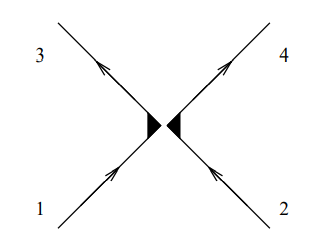
A Bethe-Salpeter model for light mesons: spectra and decays
von Claus R. Münz, Jörg Resag, Bernard C. Metsch, Herbert R. PetryNuclear Physics A 578, 418 (1994)
The spectra and electroweak decay properties of light mesons are analyzed within the framework of the instantaneous Bethe-Salpeter equation. The interaction kernel comprises alternative spin-structures for a parameterization of confinement and a residual quark-antiquark interaction based on instanton effects. It is shown that only with a vector confinement the parameters can be chosen such as to yield an excellent description of the light pseudoscalar and vector mesons including weak and two photon decays. However it is found that it is not possible to reconcile this with the Regge behavior of higher lying meson states with the same parameter set.
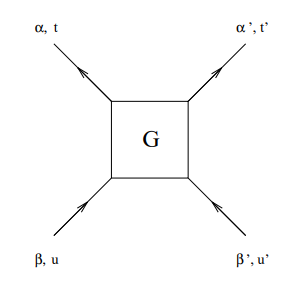
RPA Equations and the instantaneous Bethe-Salpeter Equation
von J. Resag, D. Schüttenucl-th/9312013 (1993)
We give a derivation of the particle-hole RPA equations for an interacting multi-fermion system by applying the instantaneous approximation to the amputated two-fermion propagator of the system. In relativistic field theory the same approximation leads from the fermion-antifermion Bethe-Salpeter equation to the Salpeter equation. We show that RPA equations and Salpeter equation are indeed equivalent.
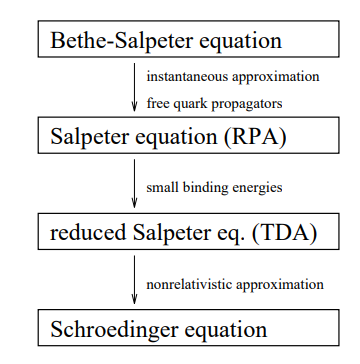
Analysis of the instantaneous Bethe-Salpeter equation and its application to qq- bound states
von Jörg Resagmeine Dissertation bei Prof. H.R. Petry am ITKP, Universität Bonn (1994)
The instantaneous Bethe-Salpeter equation (Salpeter equation) for bound quark- antiquark states is analysed and its relation to the RPA equations well-known from nuclear theory is established. A numerical method to solve the Salpeter equation is formulated and applied to a detailed study of light, heavy and heavy- light meson mass spectra as well as electroweak decay widths. We find that the results for the mass spectra are comparable to nonrelativistic results, whereas the relativistic treatment leads to a striking improvement for the decay observables.
PDF-Datei
PS-Datei
DVI-Datei (use e.g. Yap-Viewer, part of
MiKTeX)
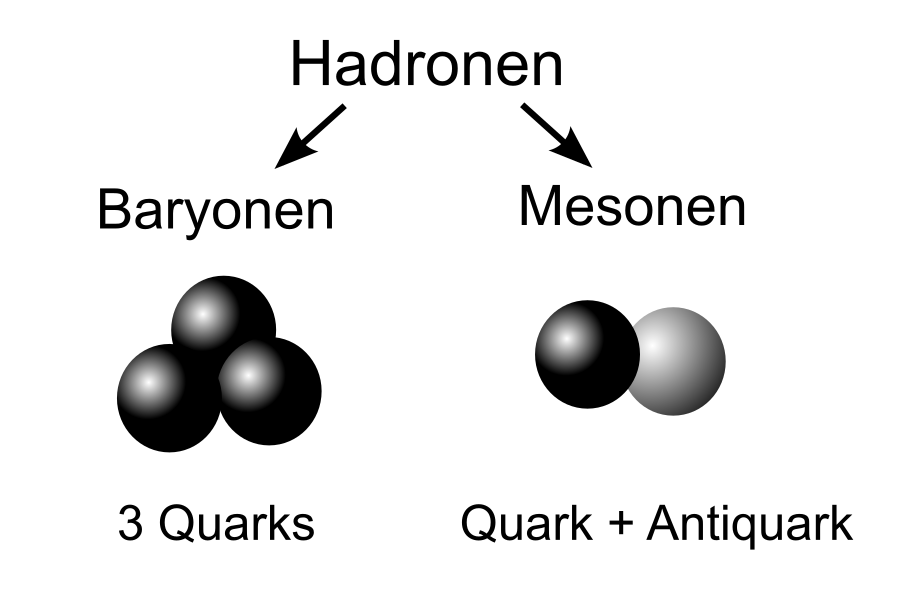
Relativistic effects and the constituent quark model of heavy quarkonia
von M. Beyer, U. Bohn, M.G. Huber, B.C. Metsch, J. ResagZ. Phys. C55 (1992) 307-315
Charmonium cc− and bottomonium bb− are investigated in the framework of a constituent quark model. A scalar confining and a one-gluon exchange (OGE) potential are used in a nonrelativistic reduction to order (p/m)2. Therefore the model includes spin dependent as well as spin independent terms. Their influence on the meson mass spectra and decay widths is analysed. We find that the experimental spectra can be reproduced by using a full model as well as by using a reduced version neglecting the spin independent terms. For both versions we calculate leptonic and radiative decay widths including relativistic corrections for the current operators. We find that for leptonic decays inclusion of all terms of the OGE potential gives better results than the non-relativistic formulas. For radiative transitions relativistic corrections are important.

Eine Sammlung von Vorlesungen zu speziellen Themen, gehalten von H.R.Petry im Sommer 1991
ausgearbeitet von Claus Münz, Uli Bohn, Jörg Resag
Die hier vorliegende Sammlung entstand aus einer Reihe von
Vorlesungen, die von Prof. H.R.Petry im Sommer 1991 am Institut für
theoretische Kernphysik in Bonn gehalten wurden. Die Vorlesungen
wurden von Claus Münz, Uli Bohn und Jörg Resag ausgearbeitet,
wobei dort, wo es für das Verständnis hilfreih ist, auch über den
reinen Vorlesungsstoff hinausgegangen wurde (insbesondere bei dem
Kapitel über die Symmetriebrechung in der QCD). Das Kapitel über
die zweite Quantisierung wurde aus der Kursvorlesung zur
relativistischen Quantenmechanik von H.R.Petry entnommen. Das Kapitel
zur Bethe-Salpeter-Gleichung stammt aus einer Rechnung, die unter
Anleitung von H.R.Petry in Zusammenarbeit mit B.Metsch entstand.
Inhalt: Spinoren und die Diracgleichung, Zweite Quantisierung für Fermionen,
Intrinsische Symmetrien, Bethe-Salpeter-Gleichung: Das Wick-Cutkosky-Modell,
Symmetriebrechung in der QCD, Vielteilchenwellenfunktionen,
Unitäre Darstellungen der Poincarégruppe.
PDF-Datei
PS-Datei
DVI-Datei (use e.g. Yap-Viewer, part of
MiKTeX)

Darstellungen der Poinaregruppe
Die S-Matrix im Wechselwirkungsbild
Gapgleichung und chirale Symmetriebrechung
ausgearbeitet von Jörg Resag
zum Teil nach Vorträgen von H.R.Petry (1992)
Die hier vorliegende Sammlung schließt an die Sammlung von Vorlesungen zu speziellen Themen von H.R.Petry, 1991 (siehe oben) an. Die dort verwendete Notation wird auch hier benutzt.
PDF-Datei
PS-Datei
DVI-Datei (use e.g. Yap-Viewer, part of
MiKTeX)